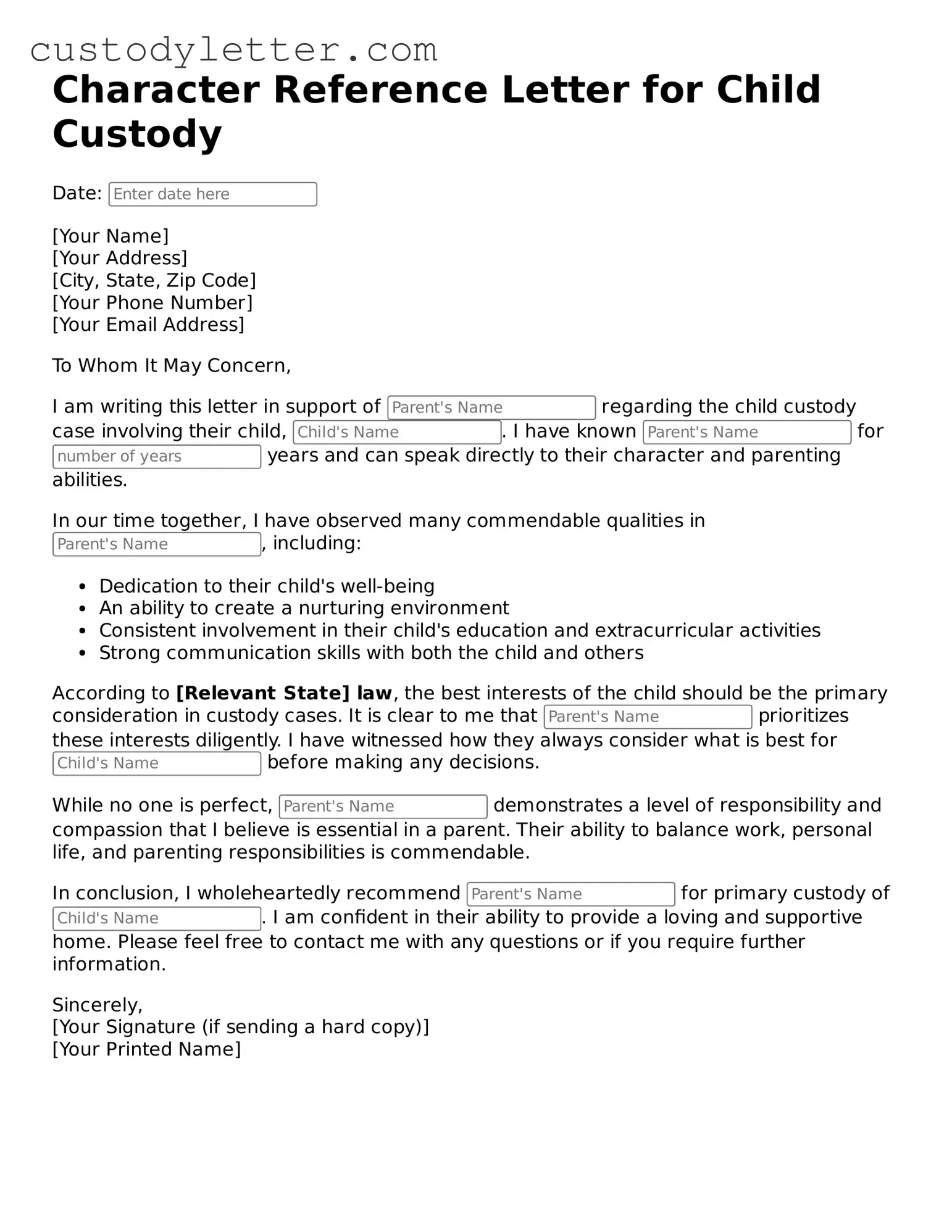Steps to Filling Out Character Reference Letter for Child Custody
Filling out a Character Reference Letter for Child Custody form can be a straightforward process. This letter serves as a personal testament to a parent's character, which can play a significant role in custody decisions. Here’s how to effectively complete the form to ensure it conveys the necessary information clearly.
- Begin with your contact information: At the top of the letter, include your full name, address, phone number, and email address. This helps establish your credibility and allows the court to contact you if needed.
- Date the letter: Write the date on which you are completing the letter. This helps to provide a timeline for when the reference was made.
- Address the letter: Use a formal salutation, such as "To Whom It May Concern" or address it directly to the judge or court handling the custody case, if known.
- Introduce yourself: Start with a brief introduction of who you are and your relationship to the parent in question. Mention how long you have known them and in what capacity.
- Describe the parent's character: Provide specific examples of the parent's qualities that make them a good candidate for custody. Discuss their parenting skills, responsibility, and any positive traits that stand out.
- Include observations: Share any relevant observations about the parent’s interactions with their child. This can include how they handle challenges, their involvement in the child’s life, and their commitment to the child’s well-being.
- Conclude with a strong statement: Wrap up the letter with a summary of your belief in the parent’s ability to provide a loving and stable environment for the child. Offer your willingness to discuss your letter further if needed.
- Sign the letter: End with your signature, followed by your typed name. If applicable, include your title or relationship to the parent.
Once you have filled out the form, review it for clarity and accuracy. Ensure that the tone remains respectful and supportive throughout. This letter can significantly influence custody decisions, so take your time to present your thoughts thoughtfully.
